culture, nature, nikko
Nikko, Japan: A Wonderful Traditional Haven in the North
Linh Le
Posted on January 06, 2023
Share:
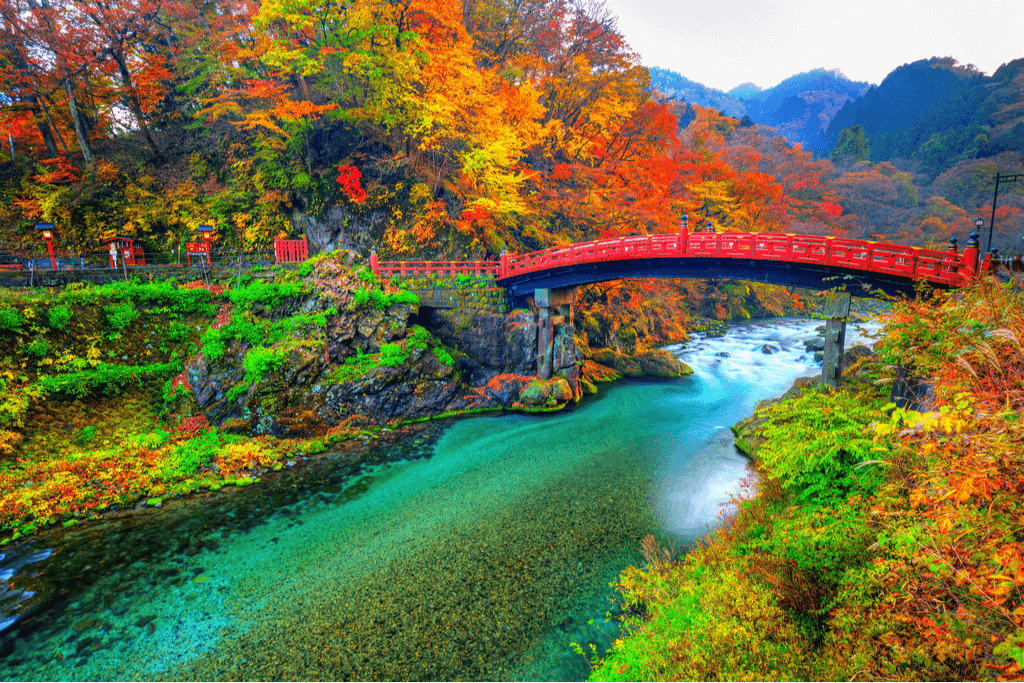
If you are looking for a getaway land to enjoy all the best typical attractions of Japan, Nikko’s ancient cultural sites, natural landscapes, and hot springs, are perfect for you! Check this out to see what this city offers, especially on a day trip from Tokyo!
Nikko is in Tochigi Prefecture (in the northern part of Kanto), a two-hour drive from Tokyo. It is one of Japan’s most popular tourist destinations, with beautiful natural scenery and long-standing historical and sacred sites. The ideal time to visit Nikko is in spring and autumn, especially in autumn, due to its changing landscape during the momiji season.
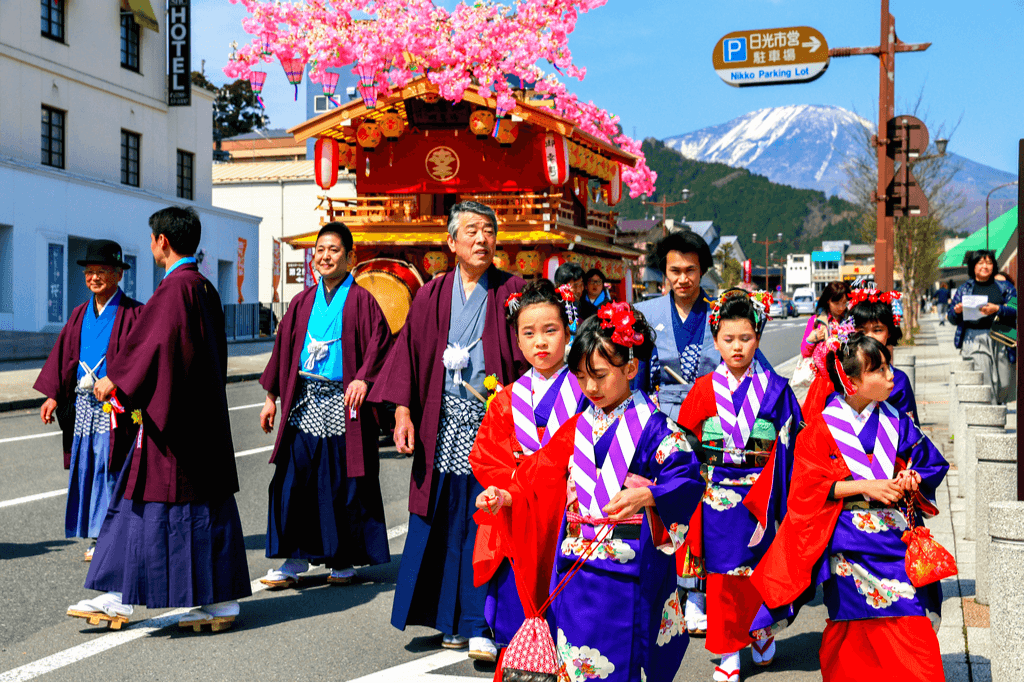
Nikko, Japan Heritage Sites
Speaking of Nikko, we must remember to mention its World Heritage Sites. There are three in total: Toshogu Shrine, Futarasan Shrine, and Rinnoji Temple.
Toshogu Shrine
The most impressive and visited site is Toshogu Shrine. It honors Tokugawa Ieyasu, the founder of the Tokugawa Shogunate ruled Japan from 1603 to 1867. Here you can witness the most beautiful gate in Japan, also known as National Heritage – Yomeimon Gate. From the corridor to the two sides of the gate, the pillars and buildings have more than 500 sculptures called “Higurashimon,” meaning they are not boring to see all day long.
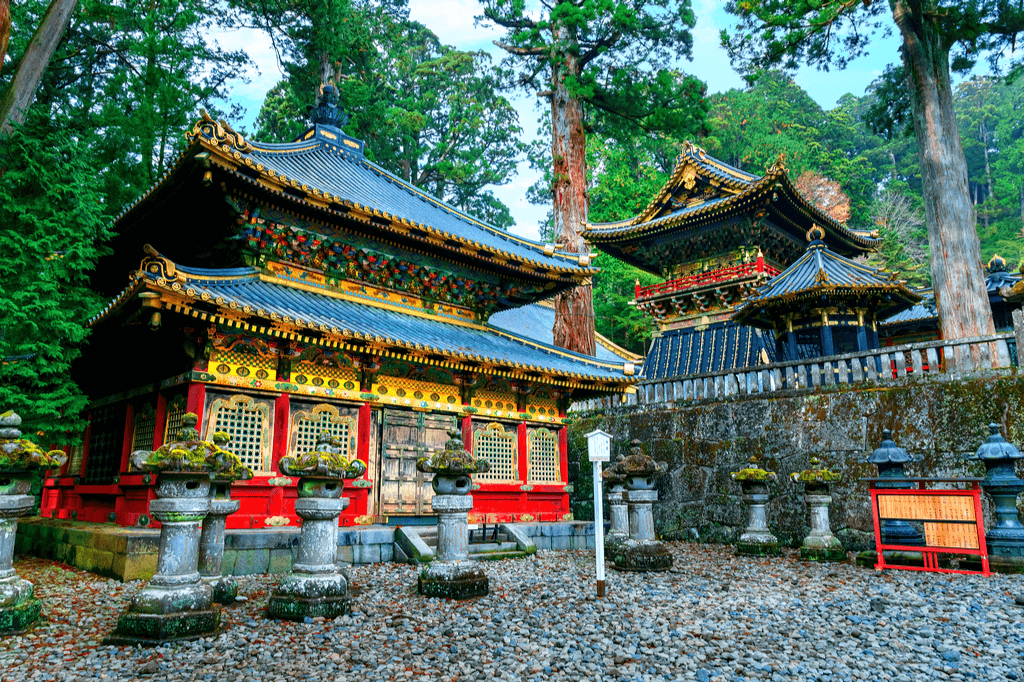
Moreover, you can spend hours admiring the intricate animal carvings that were said to be built by the best carpenters in Japan. One of the most famous ancient sculptures you cannot miss is the “Three Wise Monkeys,” which represents the maxim “hear no evil, speak no evil, see no evil.”
Looking for traditional Japanese sweets and drinks to welcome the new year like the Japanese? Check out Sakuraco! Sakuraco delivers traditional Japanese snacks, teas, sweets, and snacks from Japan to your door every month so that you can enjoy Japan’s taste anywhere!
Futarasan Shrine
Futarasan is the second largest shrine in Nikko, Japan, after Toshogu shrine, but it’s much older. To that end, it’s a place of worship for three of Nikko’s most sacred mountains: Mount Nantai, Nyoho, and Taro. In addition, they also honor three Shinto Gods: Okuninushi, Tagorihime, and Ajusukitakahikone. Two swords, Japan’s national treasure, are displayed in its main hall.
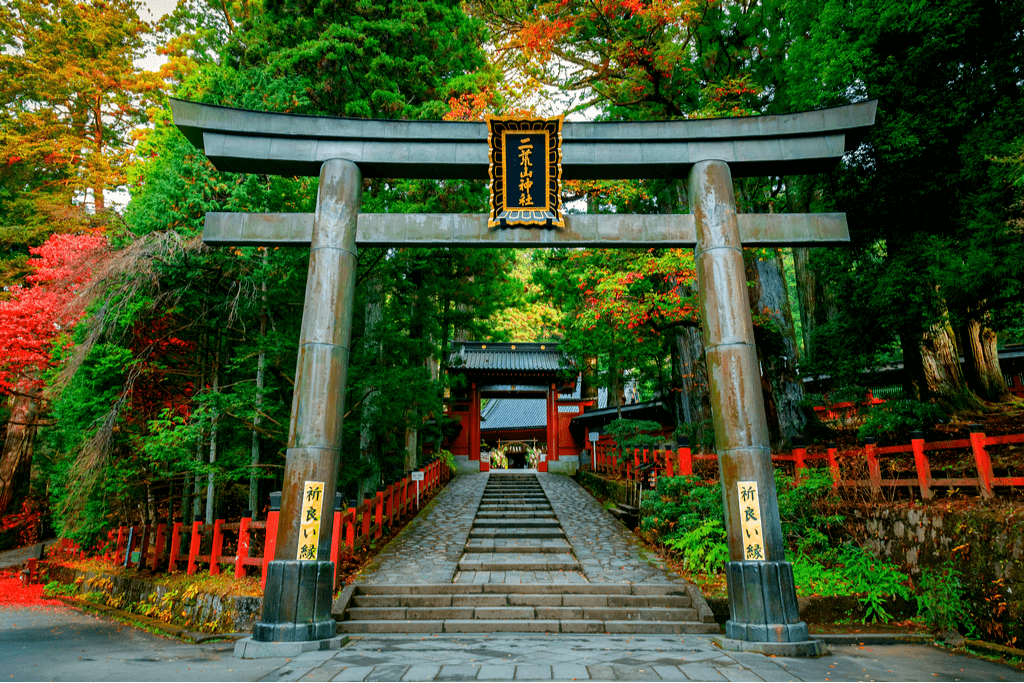
To reach this shrine, visitors will cross the beautiful red Shinkyo Bridge. Shinkyo Bridge is an accompanying structure and is considered an important cultural property of Japan.
Legend has it that when the monk first attempted to ascend the sacred Mount Nantai, the Daiya River blocked his way. As he prayed to cross the river safely, the River God summoned giant snakes to form a bridge, resulting in the bridge’s second name, “Yamasugeno-jabashi,” meaning “snake bridge of sedge.”
Rinnoji Temple
Rinnoji Temple was built in the 8th century, and the Tokugawa general expanded it later. The temple’s main building, Sanbutsudo, houses three solemn Buddha statues that are said to represent Nikko’s three sacred mountains.
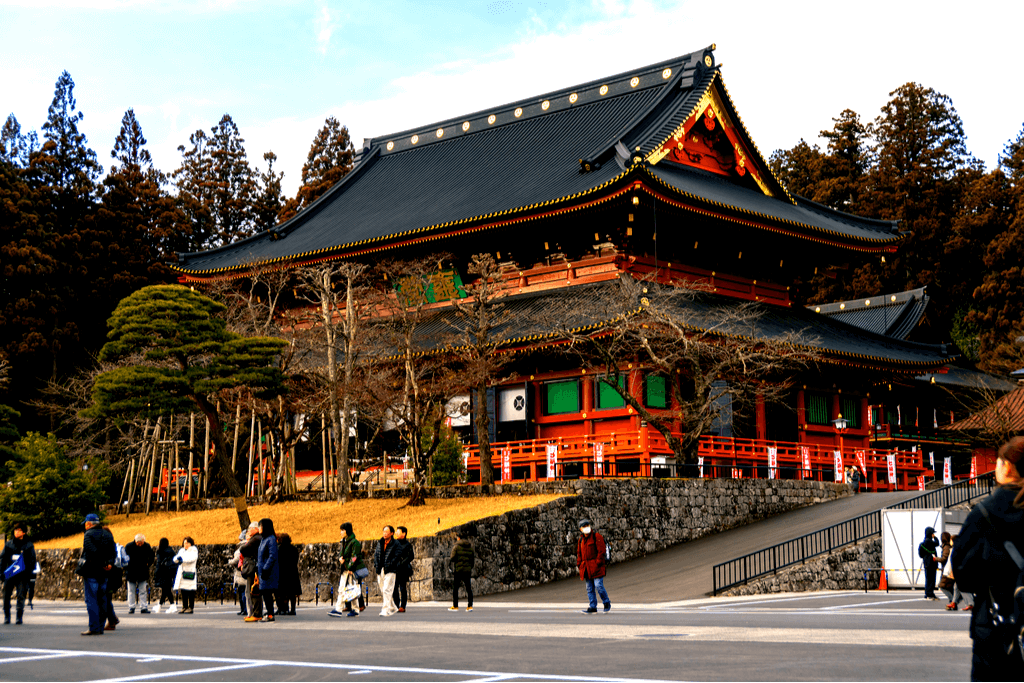
Opposite Sanbutsudo stands the temple’s treasure house with Buddhist and Tokugawa-related exhibits. There is also a tiny Japanese-style garden located behind the treasure house. As a result, it’s a perfect example of an area where elements of Buddhism and Shinto were closely intertwined.
Natural landscapes in Nikko, Japan
Senjogahara Marshland
This marshland is famous for its diverse wildlife ecosystem with 350 species of plants and birds. It offers the best hiking trail in the Nikko National Park and is recommended to visit during autumn when all the grass turns reddish yellow. There are many minor observation points throughout the journey to explore the vast plateau, up to 400 hectares wide, for you to admire and have more relaxing outdoor experiences in Nikko, Japan.
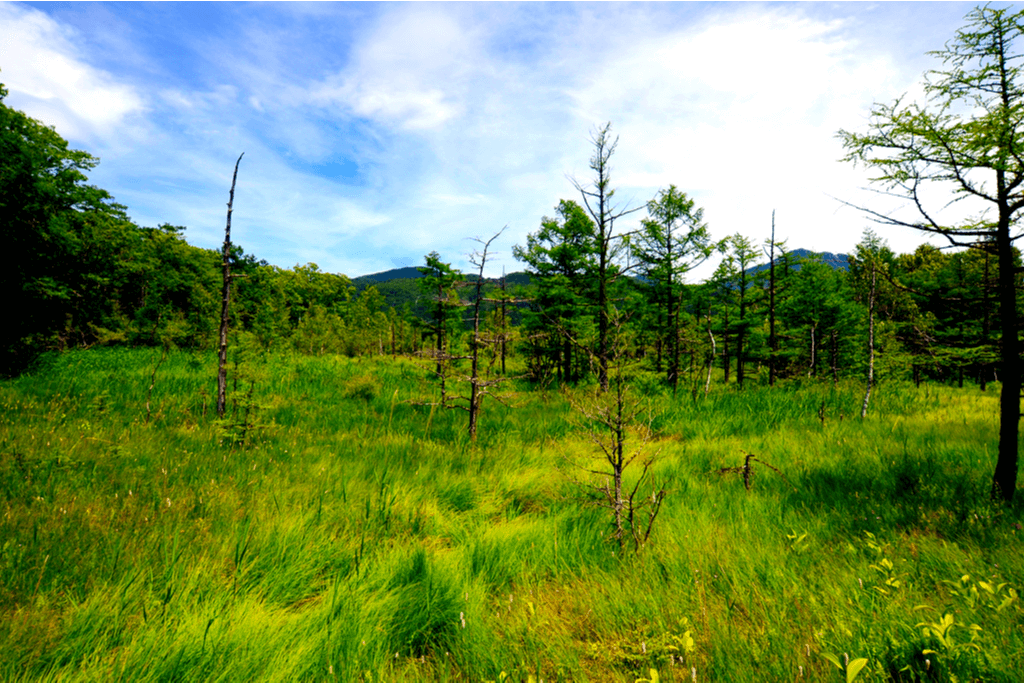
Lake Chuzenji
Lake Chuzenji is at an altitude of 1,269 m (4,163 ft) above sea level, with water flowing directly from Kagen Falls. The contrast between the lake and Mount Nantai in the north creates such a magnificent view that it’s one of Japan’s 100 most beautiful scenes.
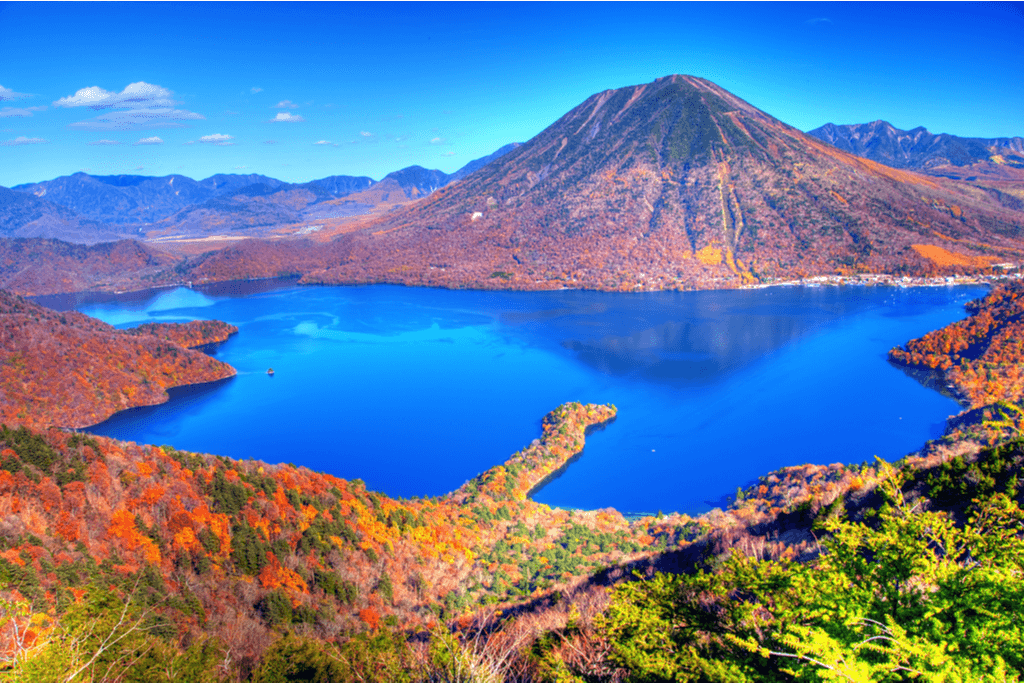
The beauty of azaleas and momiji trees in early summer makes this place more popular. You can admire the lake view on boats going down the water or relax along the lakeside is also an equally attractive option in Nikko, Japan.
Kegon Falls
Kegon Falls is one of Japan’s most prominent and famous waterfalls in Nikko. The majestic waterfall flowing from 97m (318 ft) is breathtaking. You can use the elevator to reach the observatory area and admire the panoramic view and the close-up of the 4.5m (15ft) deep waterfall basin. Feeling the sound of a steep waterfall will be a new experience to help you regain physical and mental energy.
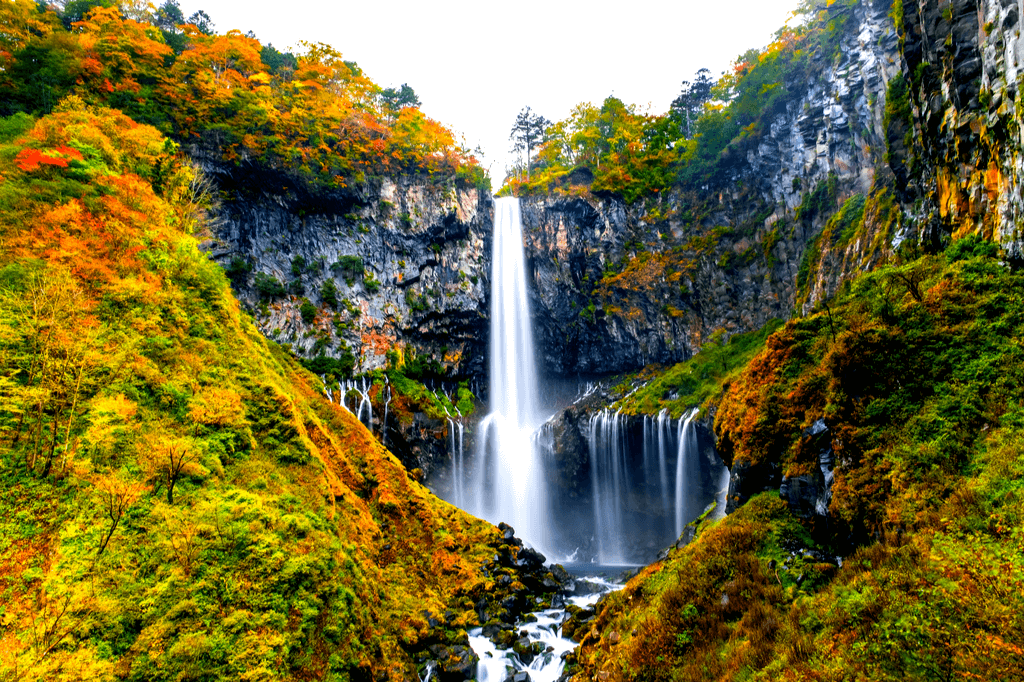
Ryuzu Falls
Ryuzu Falls are probably the second most accessible of Nikko’s waterfalls after Kegon Falls. This waterfall has its name from a large rock near the foot of the waterfall that divides the water in half, forming the shape of a dragon’s head. The scenery around the waterfall is famous for its thousands of red leaves in autumn and its beautiful red azaleas in May. You can see the waterfall better if you try to climb the steps along the riverbank.
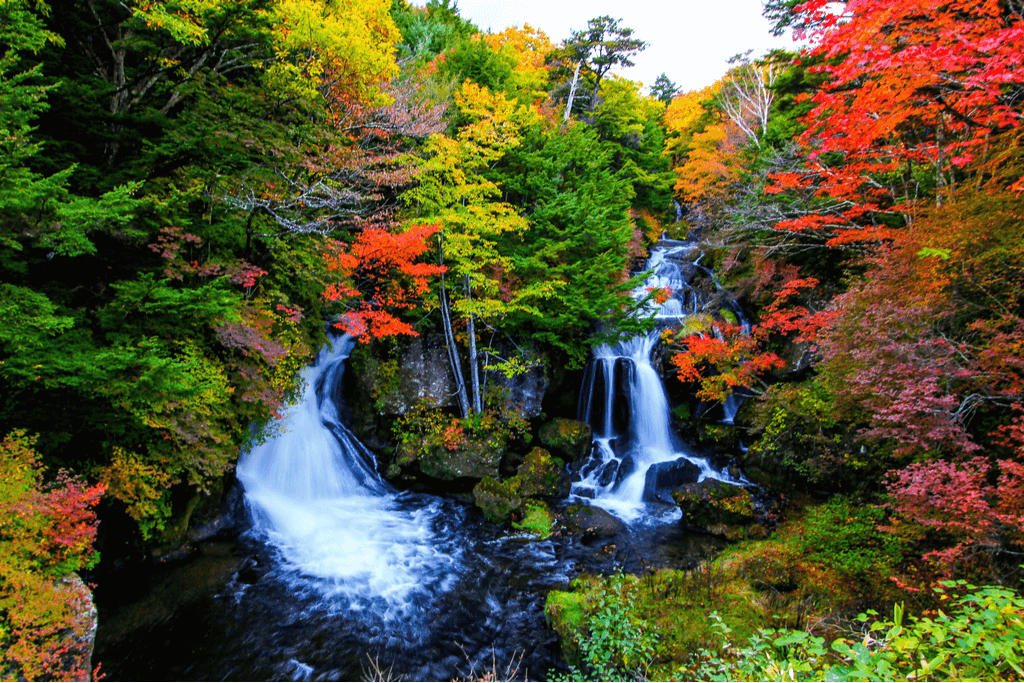
Go sightseeing according to the order of Lake Chuzenji, Kegon Falls, Ryuzu Falls, and Senjougahara. You can have a whole fun day taking pictures and enjoying these natural beauties in a day.
Other recommended spots in Nikko, Japan
Kanmangafuchi Abyss
If you go along the Daiya River, you will come to a small gorge called Kanmangafuchi Abyss. You will also get a beautiful view of the botanical garden on one side of the river.
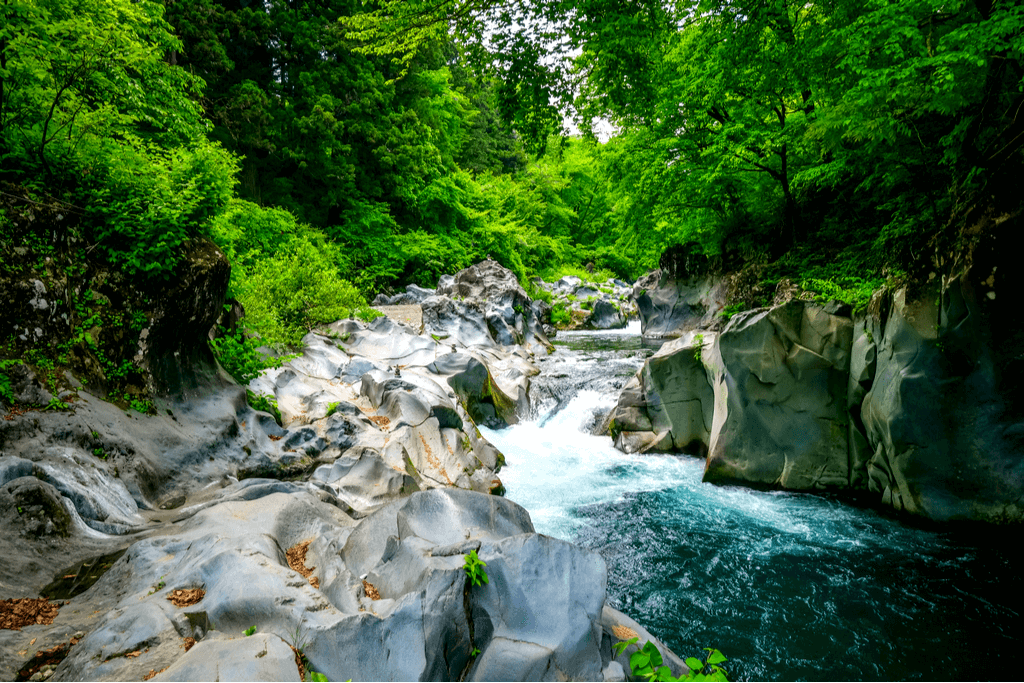
Besides the beautiful scenery, you can also find on the south bank 70 statues of the Buddha Jizo, also known as Bakejizo (jizo ghosts). The name is because there is a story that every time you count, the number of statues changes. Explore the area for yourself!
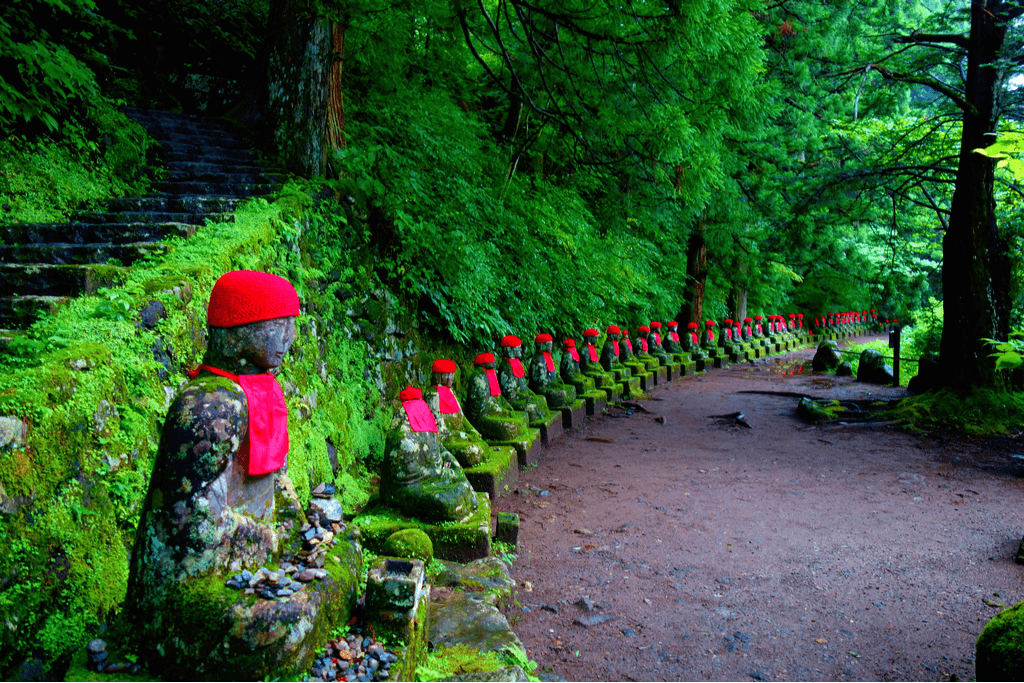
Kinugawa Onsen
Kinugawa Onsen is one of the large-scale hot springs in the Kanto region, located at the upper reaches of the Kinugawa River. Monks and feudal lords discovered this hot spring in the Edo period. Kinugawa Onsen has low-alkaline spring water that softens the skin, dispels fatigue, and improves health.
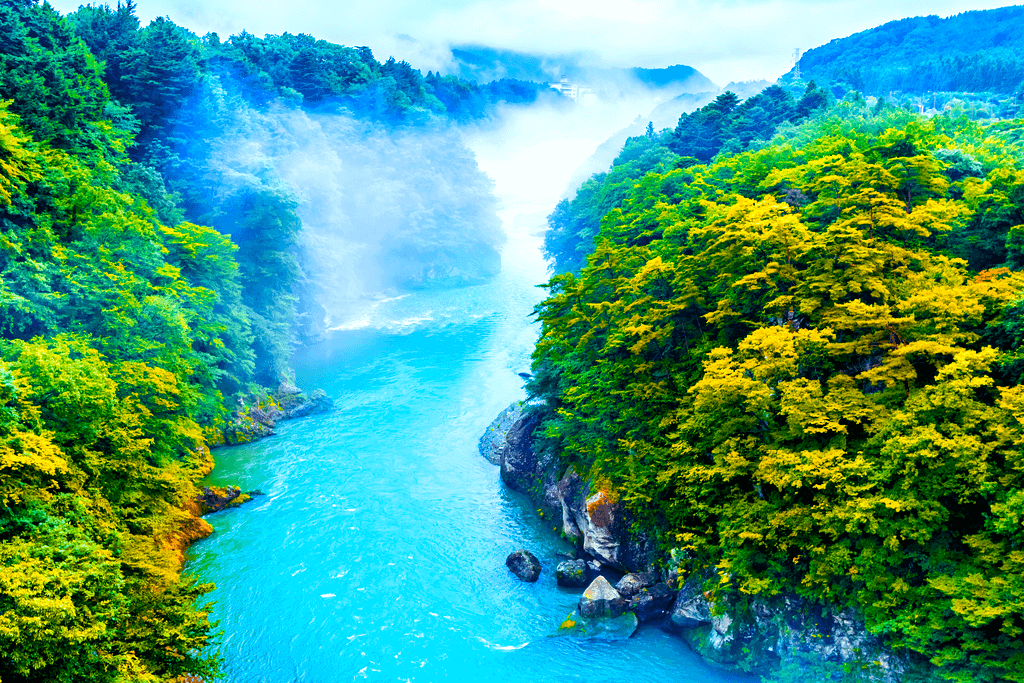
Edomura
Nikko Edomura is a cultural park with a background of experiencing daily life, specifically in the Edo period. This park has five subdivisions: Kaido (road to Edo), Shukuba-machi (Inn Town), Shokagai (marketplace), Buke-yashiki (Samurai Residence), and Ninja no Sato (Ninja Village).

The park’s staff are all dressed in traditional Edo period costumes and perform acts for visitors. In addition, this park also has many fun activities for families, such as experiencing self-dressing Edo-ite or living the life of a ninja.
These are just some of Nikko’s must-visit spots; many more destinations in Nikko are worth a visit too! Do you know any other best places in Nikko, Japan? Tell us in the comment below!

Discover authentic flavors with Sakuraco
Get Sakuraco 

Discover authentic flavors with Sakuraco
Get Sakuraco 
Related Articles

Hatsumode: Why Is It Japan’s Most Important Tradition?
Hatsumode is the first visit to a shrine or temple in the New Year in Japan, and it is one of the country’s most important traditions. Every year, millions of people participate, demonstrating the profound connection between this custom and daily life.

Japanese Fish Bait: The Beautiful Art of Kebari
Kebari are traditional hand-tied flies used for freshwater fishing in Japan, especially in mountain streams where small insects form the main diet of native fish. Instead of bright plastic lures, kebari use feathers, thread, and natural materials to create subtle movements in the water.

Japan Holidays Guide: Relax, Explore, and Delight in Festive Fun
As the year draws to a close, everywhere buzzes with preparations for the holidays, and Japan is no exception. Despite the cold winter weather, you can feel warmth in the scenery, decorations, and festive activities across the country. Let’s explore the unique experiences of holidays in Japan that many people dream of enjoying at least once in their lifetime!

Tokyo Gardens: Five Beautiful Traditional Japanese Gardens to Visit
Tokyo gardens offer a relaxing escape for visitors looking to get a breath of fresh air. However, Tokyo has more than just the typical gardens we see in the West. Let’s explore five traditional Japanese gardens and what makes them unique!



